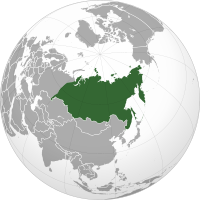
Sea‐air exchange patterns along the central and outer East Siberian Arctic Shelf as inferred from continuous CO2, stable isotope, and bulk chemistry measurements
Sign Up to like & getrecommendations! Published in 2017 at "Global Biogeochemical Cycles"
DOI: 10.1002/2017gb005656
Abstract: This large-scale quasi-synoptic study gives a comprehensive picture of sea-air CO2 fluxes during the melt season in the central and outer Laptev Sea (LS) and East Siberian Sea (ESS). During a 7 wee ... read more here.
Keywords: sea air; chemistry; east siberian; co2 ... See more keywords

Distinct genetic clustering in the weakly differentiated polar cod, Boreogadus saida Lepechin, 1774 from East Siberian Sea to Svalbard
Sign Up to like & getrecommendations! Published in 2021 at "Polar Biology"
DOI: 10.1007/s00300-021-02911-7
Abstract: The cold-adapted polar cod Boreogadus saida, a key species in Arctic ecosystems, is vulnerable to global warming and ice retreat. In this study, 1257 individuals sampled in 17 locations within the latitudinal range of 75–81°N… read more here.
Keywords: polar cod; boreogadus saida; east siberian; siberian sea ... See more keywords

The bimodality of the East Siberian fast ice extent: mechanisms and changes
Sign Up to like & getrecommendations! Published in 2023 at "Annals of Glaciology"
DOI: 10.1017/aog.2023.22
Abstract: Using operational sea-ice maps, we provide first insight into the seasonal evolution of fast ice in the East Siberian Sea for the period between 1999 and 2021. The fast ice season tends to start later… read more here.
Keywords: ice extent; ice; fast ice; east siberian ... See more keywords

Ferromanganese nodules from the East Siberian Sea near Bennett Island
Sign Up to like & getrecommendations! Published in 2017 at "Oceanology"
DOI: 10.1134/s0001437017050022
Abstract: Ferromanganese nodules recovered from the bottom of the East Siberian Sea near Bennett Island are studied by coupled ultramicroscopic and ICP-MS methods. The majority of nodules are flattened dense formations 2.5 to 10 cm in… read more here.
Keywords: bennett island; siberian sea; near bennett; ferromanganese nodules ... See more keywords

Primary Production and Associated Environmental Conditions in the East Siberian Sea in Autumn
Sign Up to like & getrecommendations! Published in 2019 at "Doklady Earth Sciences"
DOI: 10.1134/s1028334x19080257
Abstract: The spatial variability of primary production in the East Siberian Sea over a large-scale aquatic area was characterized for the first time by the data of cruise 69 of R/V Akademik Mstislav Keldysh in September… read more here.
Keywords: production; east siberian; siberian sea; production associated ... See more keywords

Gas-Geochemical Parameters of Bottom Sediments in the Northern Part of the East Siberian Sea and Podvodnikov Basin of the Arctic Ocean
Sign Up to like & getrecommendations! Published in 2020 at "Doklady Earth Sciences"
DOI: 10.1134/s1028334x20050074
Abstract: Abstract New data on the gas and chemical composition of bottom sediments of the marginal-shelf part of the East Siberian Sea, continental slope, and Podvodnikov Basin of the Arctic Ocean are presented. The genetic parameters… read more here.
Keywords: gas; podvodnikov basin; bottom sediments; east siberian ... See more keywords

Gas content of bottom sediments and geochemical indicators of oil and gas on the shelf of the East Siberian Sea
Sign Up to like & getrecommendations! Published in 2017 at "Russian Journal of Pacific Geology"
DOI: 10.1134/s1819714017040030
Abstract: The work reports on the results of geochemical studies of the bottom sediments on the shelf of the East Siberian Sea. The sediments’ gas content, gas composition, and gas geochemical and isotopic characteristics are determined.… read more here.
Keywords: bottom sediments; shelf east; east siberian; gas ... See more keywords

Confessional and Migration Factors of Economic Development of the East Siberian Region
Sign Up to like & getrecommendations! Published in 2020 at "Journal of Advanced Research in Law and Economics"
DOI: 10.14505//jarle.v10.2(40).03
Abstract: The research examines the issues related to the influence of confessional and migration factors on the processes of the integrated territorial development in the Russian Federation. The analysis of the documents of strategic planning of socio-economic… read more here.
Keywords: confessional migration; east siberian; migration factors; migration ... See more keywords

Comment on “The origin of methane in the East Siberian Arctic Shelf unraveled with triple isotope analysis” by Sapart et al. (2017)
Sign Up to like & getrecommendations! Published in 2018 at "Biogeosciences"
DOI: 10.5194/bg-15-4777-2018
Abstract: Abstract. In this comment, we outline two major concerns regarding some of the key data presented in this paper. Both of these concerns are associated with the natural abundance radiocarbon-methane ( 14C - CH4 )… read more here.
Keywords: comment; east siberian; methane east; methane ... See more keywords

Assessing the potential for non-turbulent methane escape from the East Siberian Arctic Shelf
Sign Up to like & getrecommendations! Published in 2020 at "Biogeosciences"
DOI: 10.5194/bg-17-3247-2020
Abstract: Abstract. The East Siberian Arctic Shelf (ESAS) hosts large yet poorly quantified reservoirs of subsea permafrost and associated gas hydrates. It has been suggested that the global-warming induced thawing and dissociation of these reservoirs is… read more here.
Keywords: non turbulent; methane; east siberian; ch4 ... See more keywords

Field-obtained carbon and nitrogen uptake rates of phytoplankton in the Laptev and East Siberian seas
Sign Up to like & getrecommendations! Published in 2017 at "Biogeosciences Discussions"
DOI: 10.5194/bg-2017-234
Abstract: Abstract. The Laptev and East Siberian seas are the least biologically studied region in the Arctic Ocean, although they are highly dynamic in terms of active processing of organic matter impacting the transport to the… read more here.
Keywords: siberian seas; laptev east; field; east siberian ... See more keywords